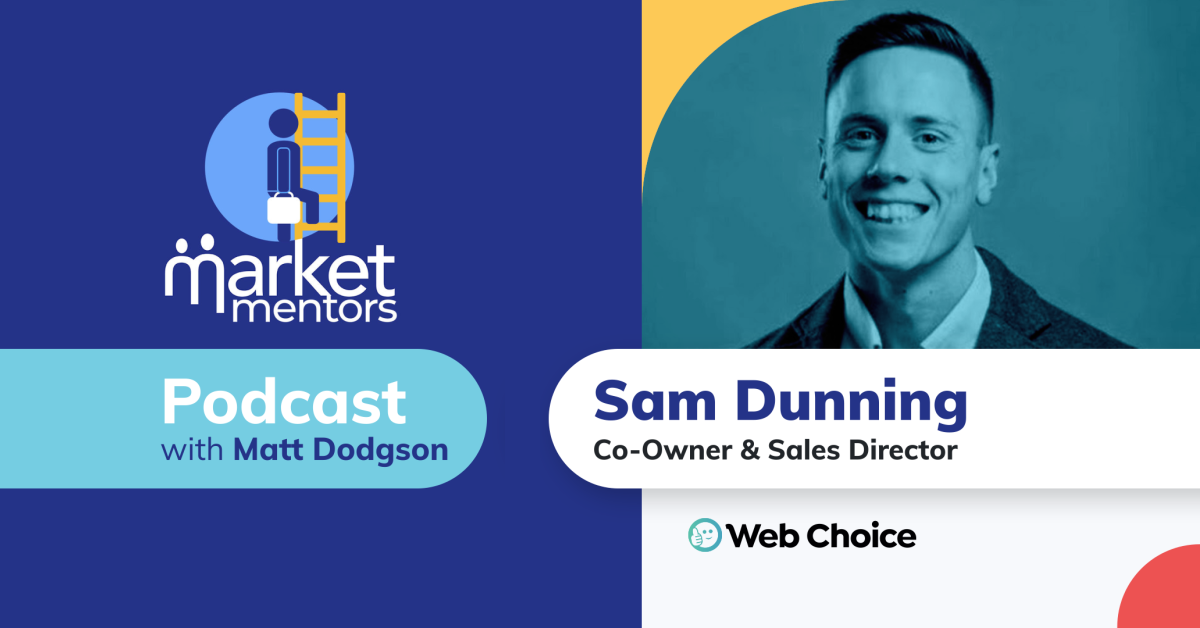
Building a website that generates leads is crucial for the success of your B2B tech business. In today’s digital age where buyers are more informed, a well-designed and optimised website can be a powerful tool to attract and convert potential customers. But where do you start?
In this podcast, I talk to Sam Dunning about the key steps to create a B2B website that not only looks great but also drives leads and delivers results. So, let’s get started!
Who they are: Sam Dunning is the Co-Owner of Web Choice
A bit of background: For the last five years Sam has been the Co-Owner of Web Choice, a web design, SEO and web development agency. He’s also the host of the podcast, Business Growth Show, with over 300 episodes and counting.
Where you can find Sam:
Connect with Sam on LinkedIn here
Often in the early days of B2B tech startups, the website is built by the Founder or development team. And invariably mistakes are made.
The single biggest mistake though, is that companies build the website that they want, rather than what fits our target audiences needs.
Sam describes:
‘Now, most of us in B2B, whether we’re a service company, or maybe a SaaS or tech company, we either want our B2B site to drive inbound leads, consult requests, or a steady flow of demo requests. And ultimately, we’re not the ones buying our stuff. We’re not the ones visiting websites and requesting demos. Our target clients, our focus buyers, our focus prospects are.’
‘So often the mistake made is that these companies are thinking, oh, I think this copy or this content is going to work well, or I think this design looks really cool. Going on their own personal preferences, rather than actually interviewing their target clients, doing proper customer research, and understanding what those prospects actually care about. It’s probably the number one mistake.’
Of course, what makes a good B2B website will differ depending on the type of business you are.
As an example, if you’re a product-led SaaS company your buyer’s needs will be very different from a tech company that sells purely to the enterprise.
But Sam suggests that these are the key components of every successful B2B website:
The first step, however, is always talking to your prospects and customers.
So building a new website is one thing, but driving relevant traffic to it is another. But there are two key areas to focus on to make sure your website is performing well and generating you leads.
When it comes to generating leads, search engine optimisation (SEO) plays a crucial role. Start by conducting keyword research to identify the terms your target audience is searching for. Use these keywords strategically throughout your website’s content, meta tags, and URLs. Ensure your website loads quickly and is mobile-friendly, as these are key factors search engines consider in their rankings.
Sam goes on to explain:
‘SEO is typically a medium to long-term game. So when it comes to understanding the keywords you actually want your site to get found for, you want to start with bottom of the funnel (BOFU) content. So what I mean by BOFU content, is search terms that your target clients are typing in when they want to speak to sales or have a sales conversation now.’
‘The mistake a lot of companies make is they do random pages, they put out random blog articles, there’s no real strategy, and then six or twelve months down the line, they’re wondering where all the leads are.’
Once you have your website built and it’s technically optimised for search engines, then, as Sam suggests, it’s time to start creating content optimised for the keywords you want to target.
Depending on your website’s domain authority Sam suggests following some, or all, of these tips:
Subscribe to our fortnightly newsletter to hear about our latest podcasts, blogs, career advice & jobs.